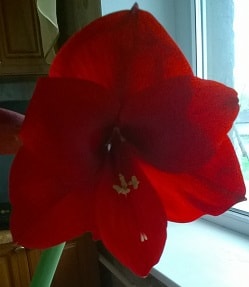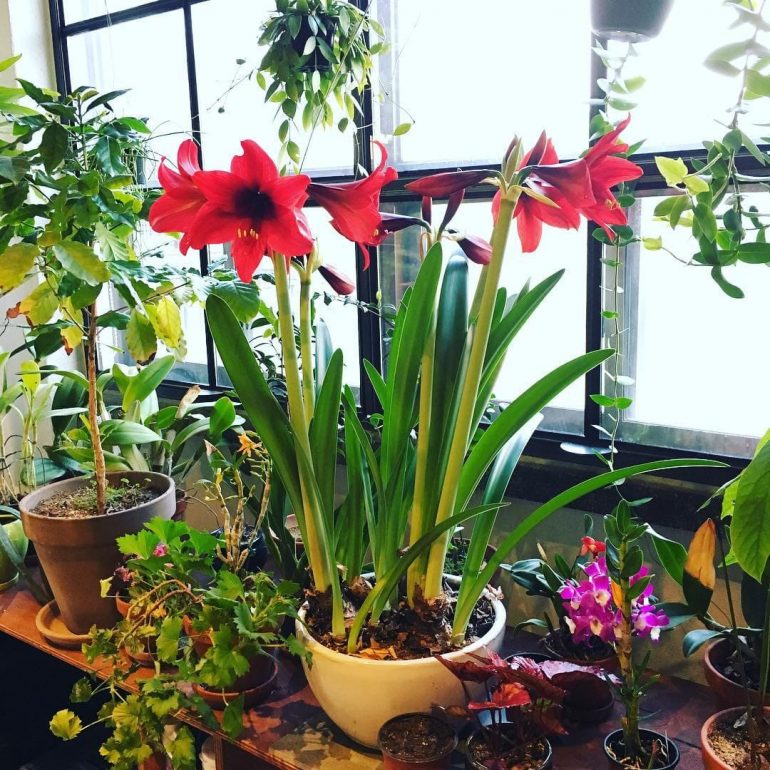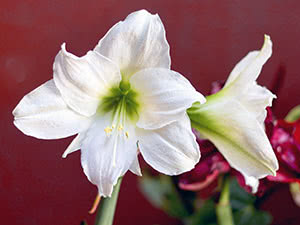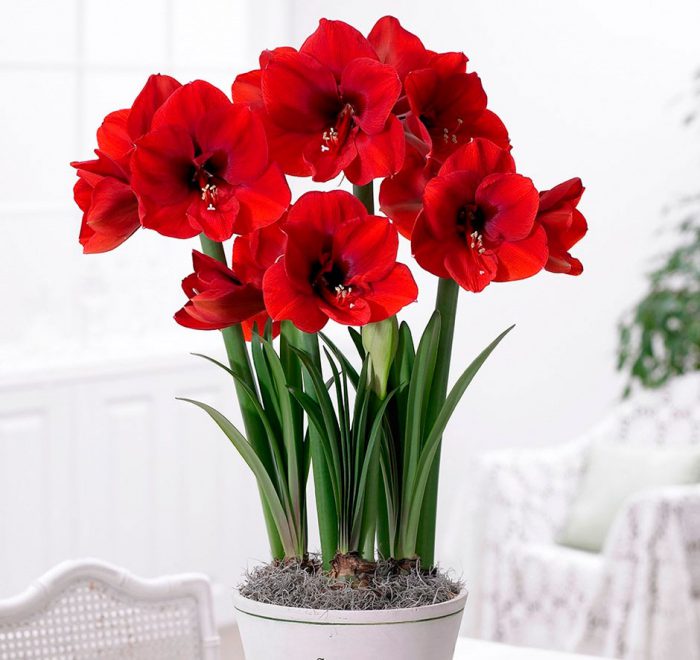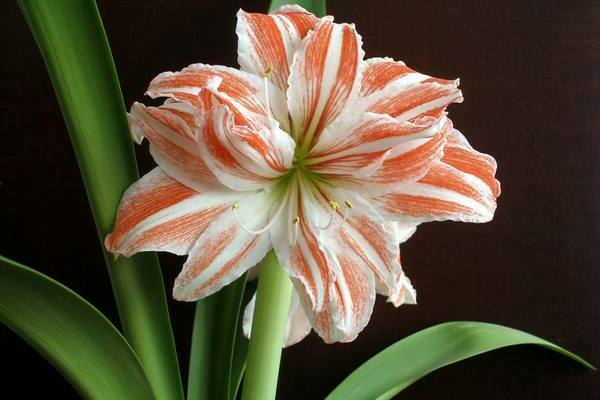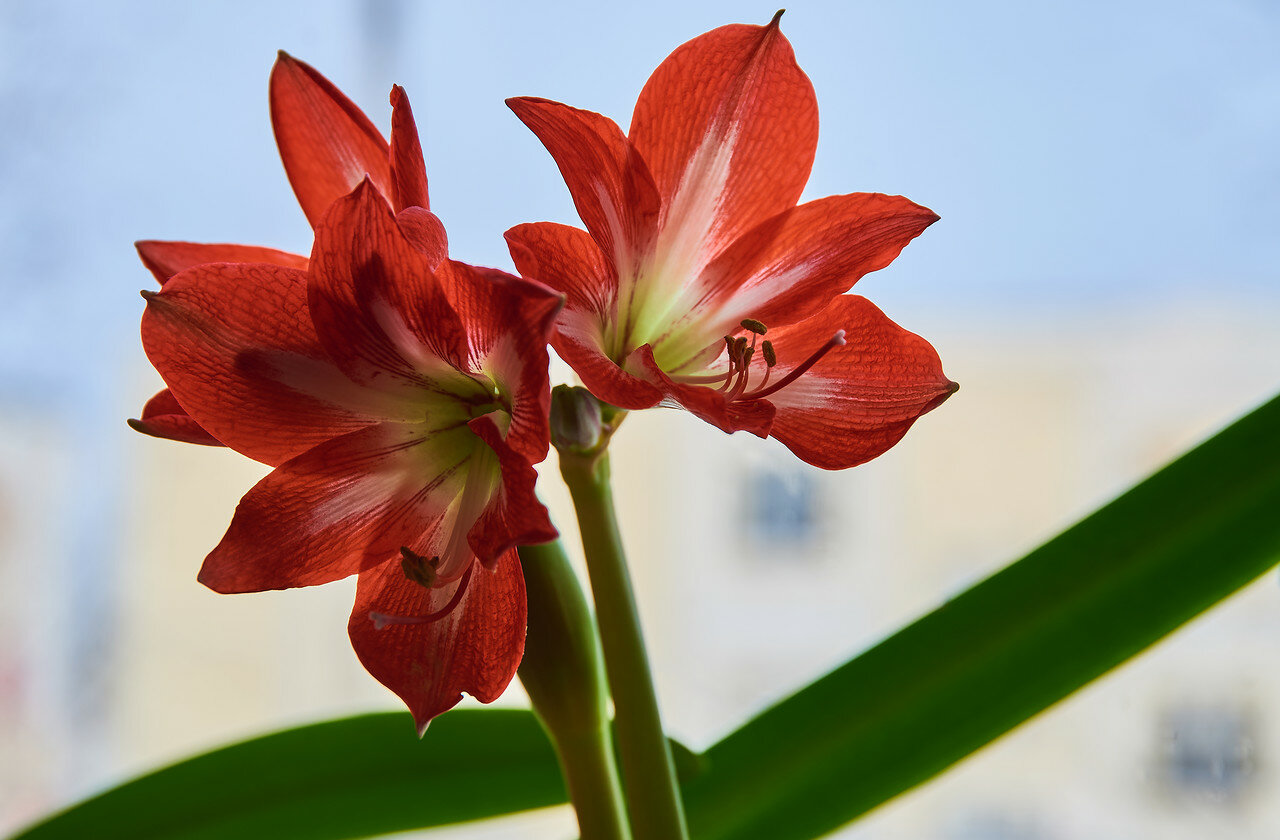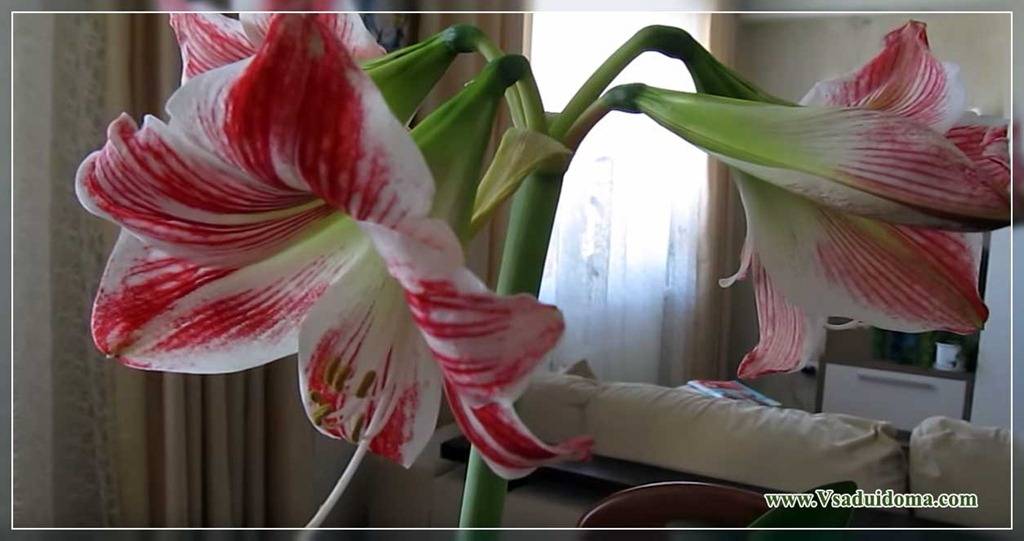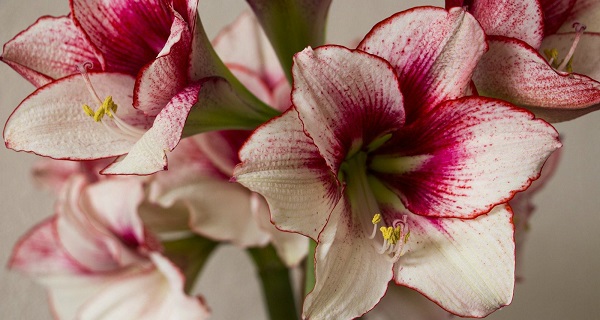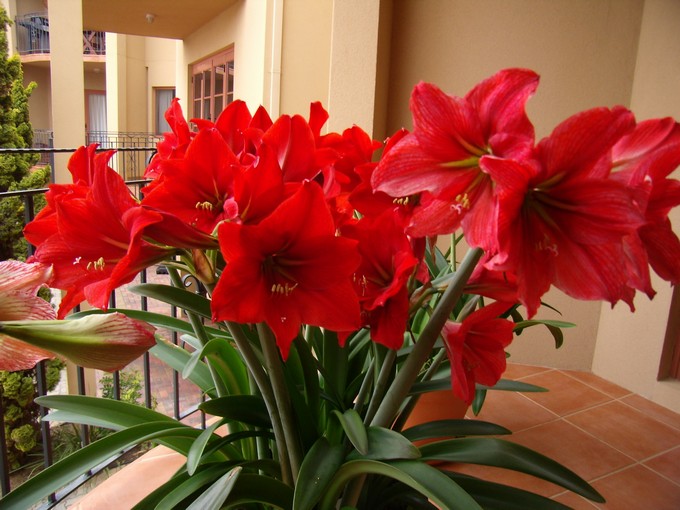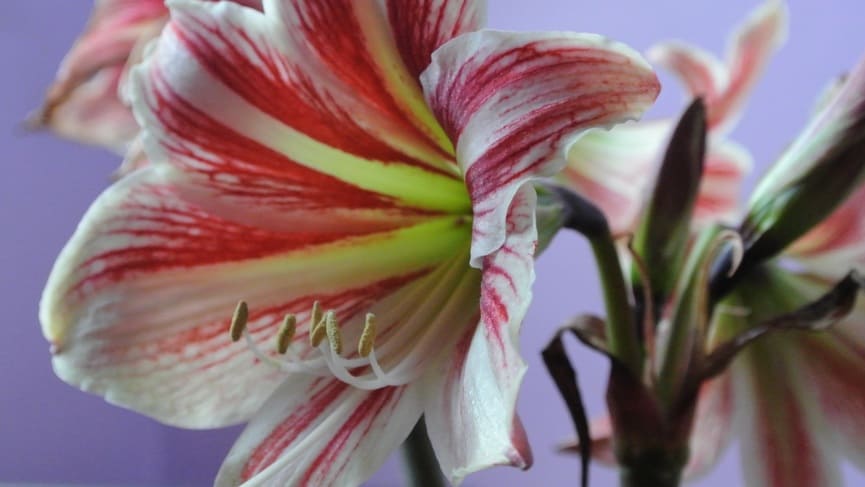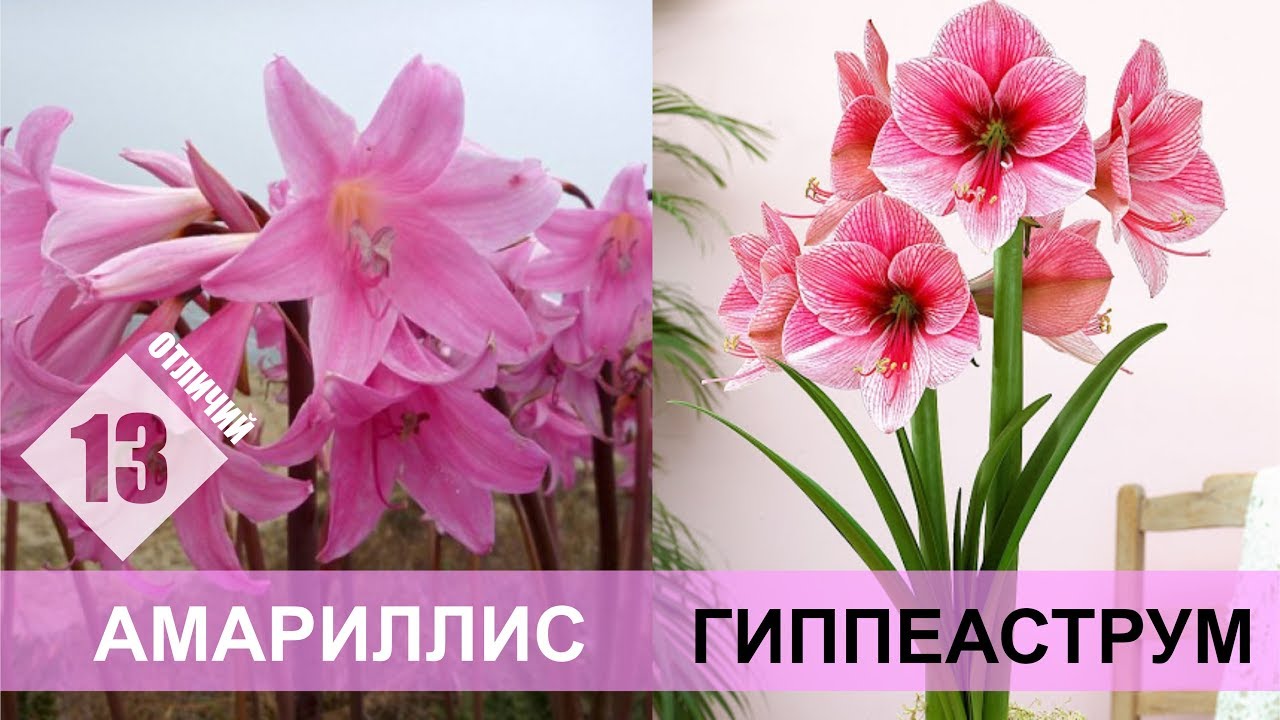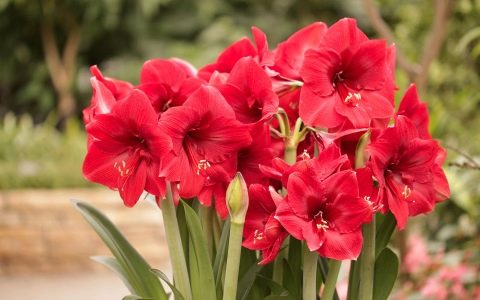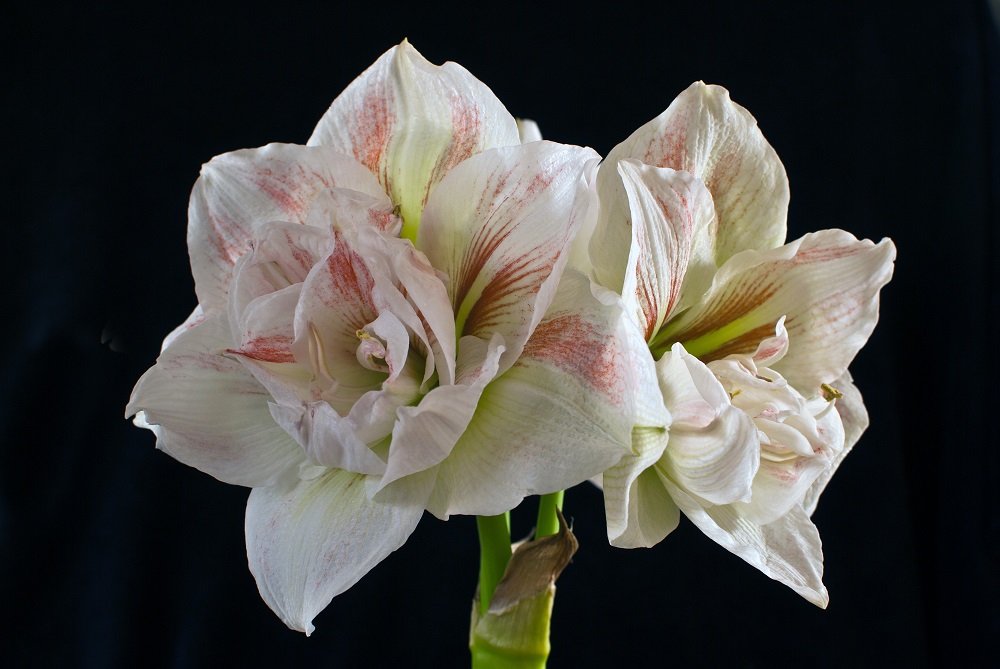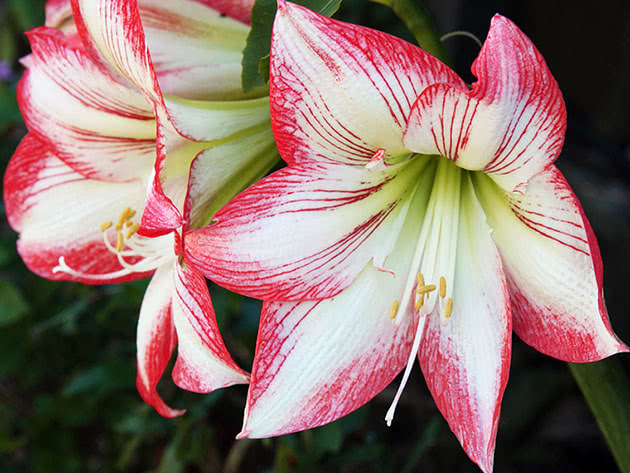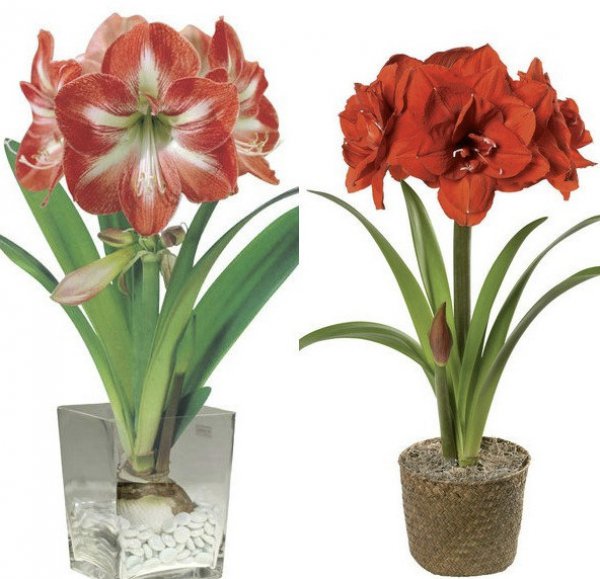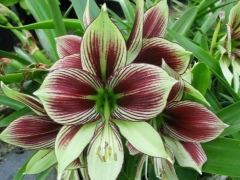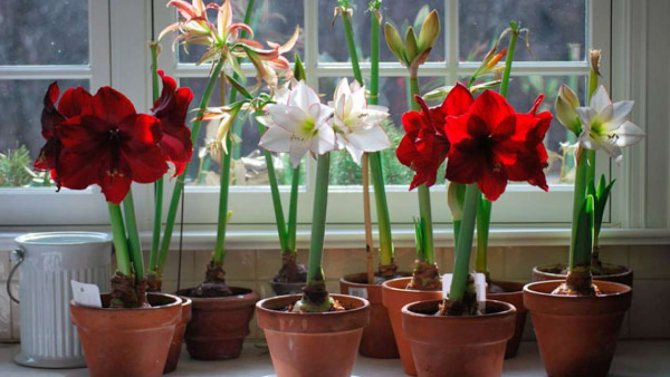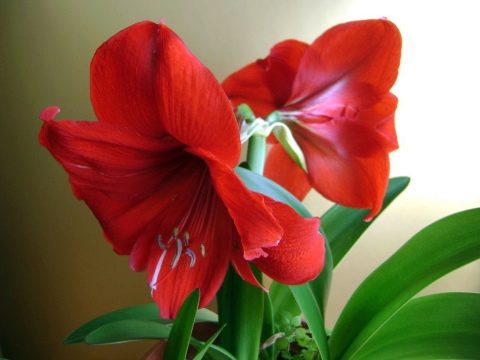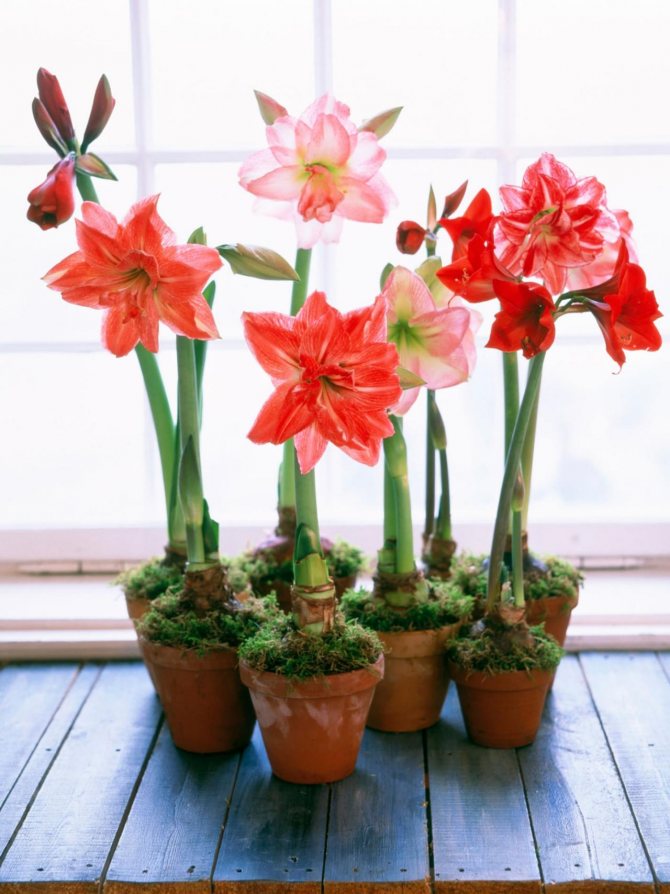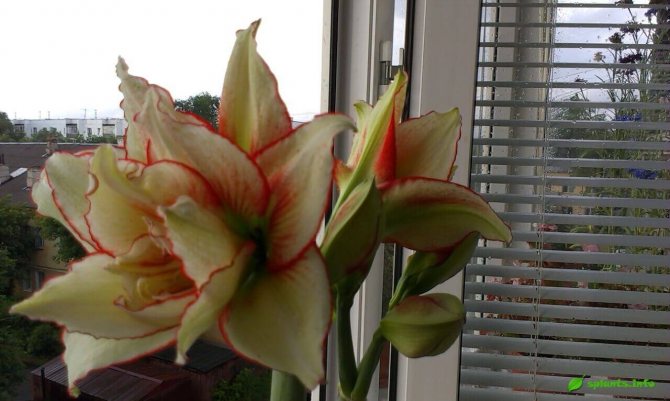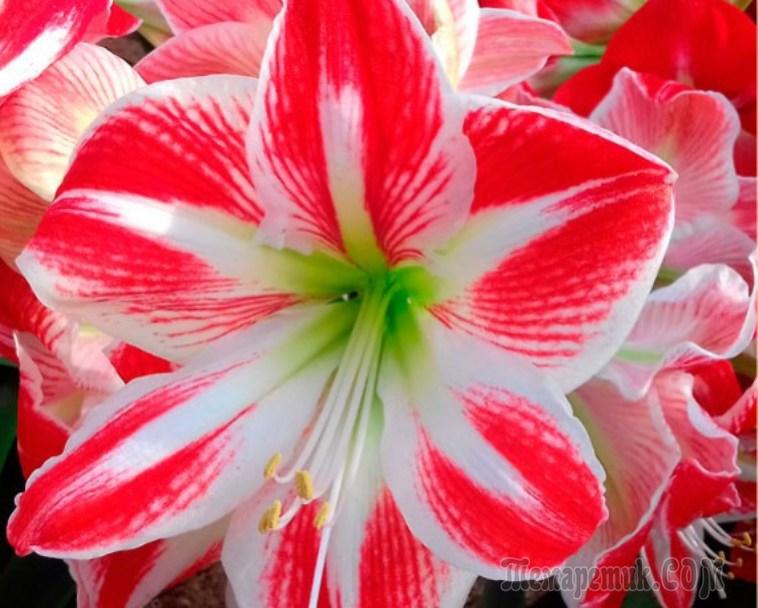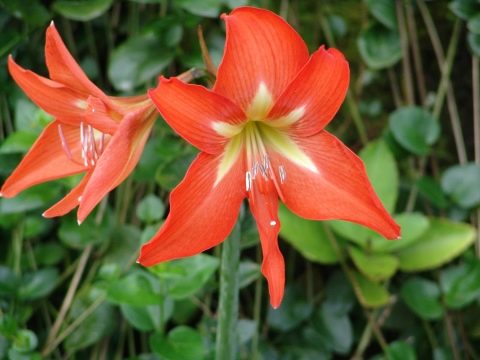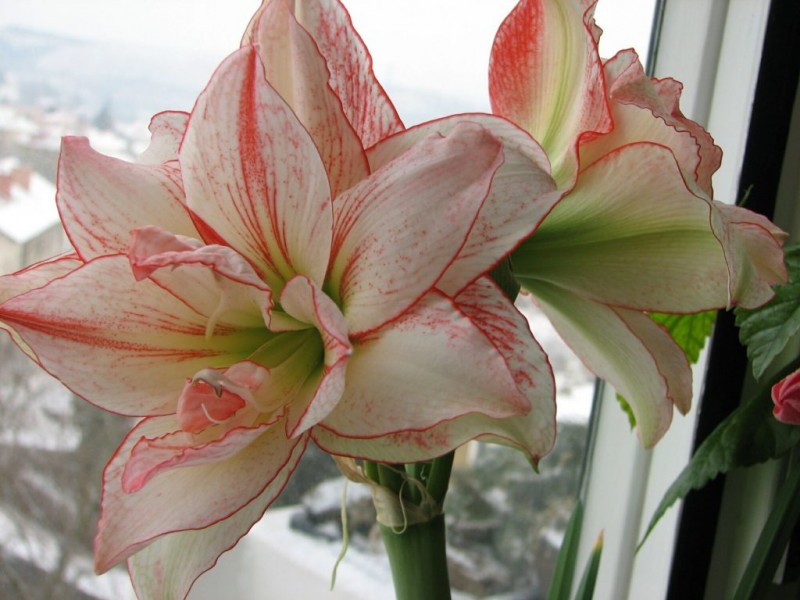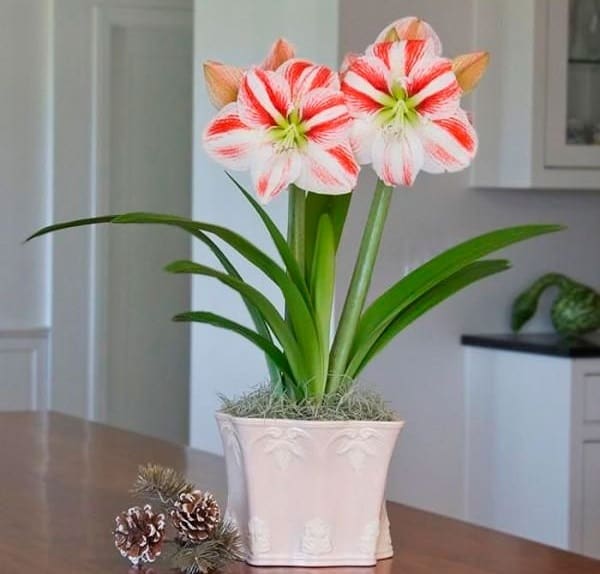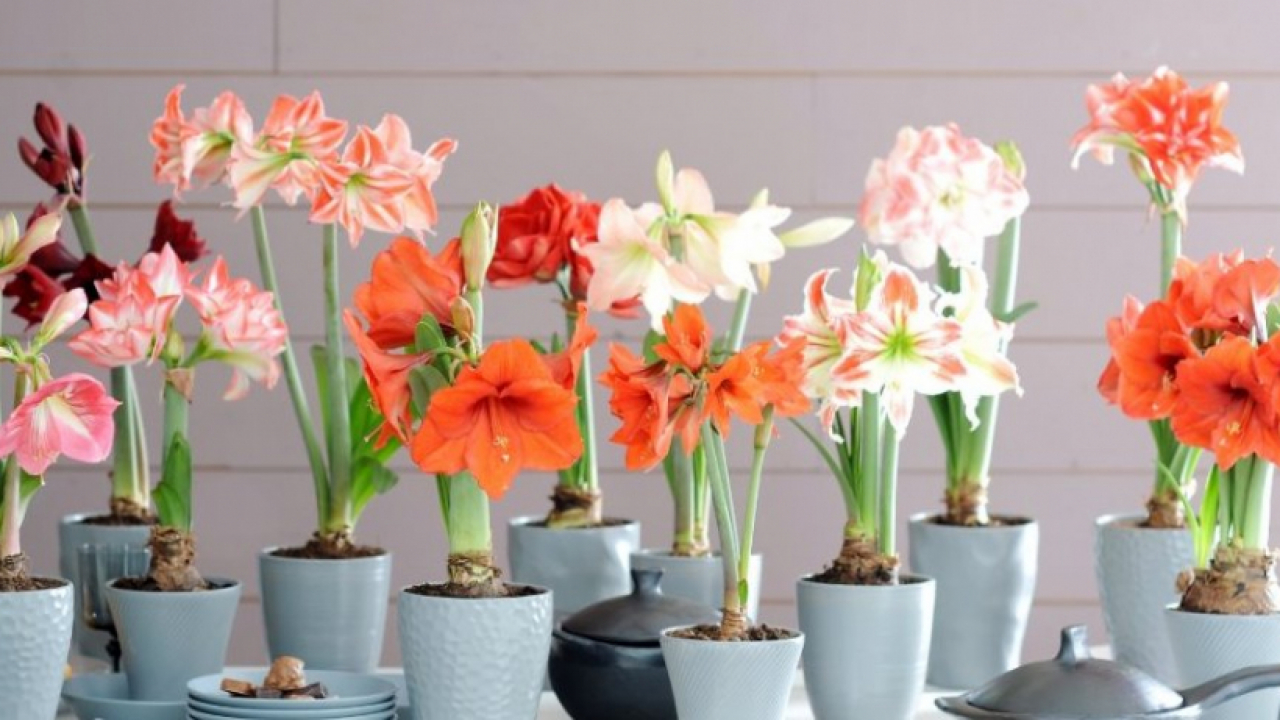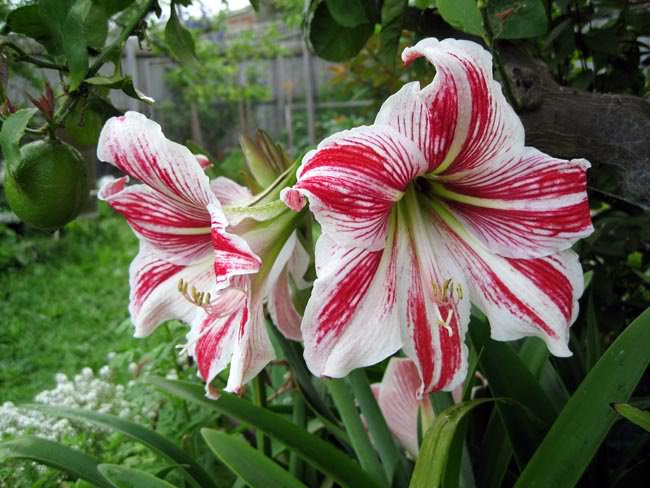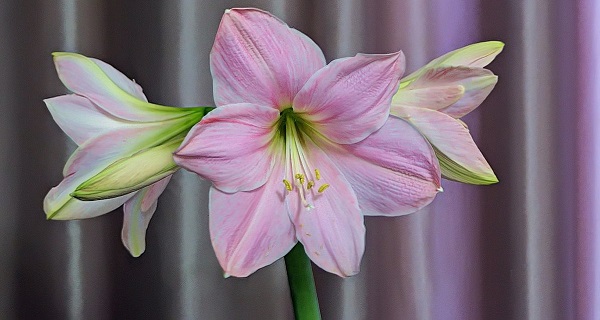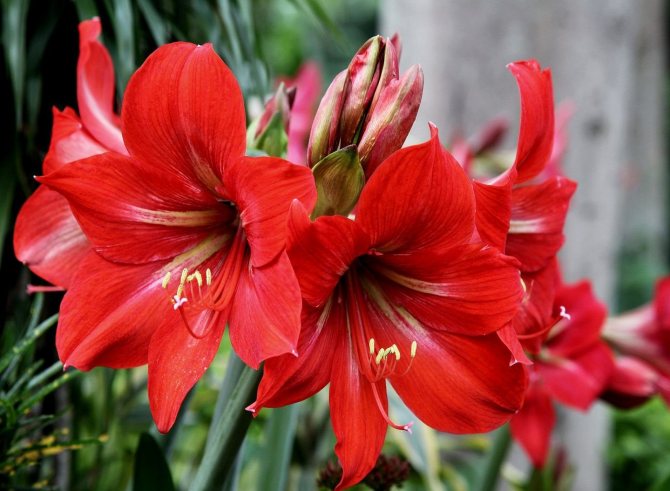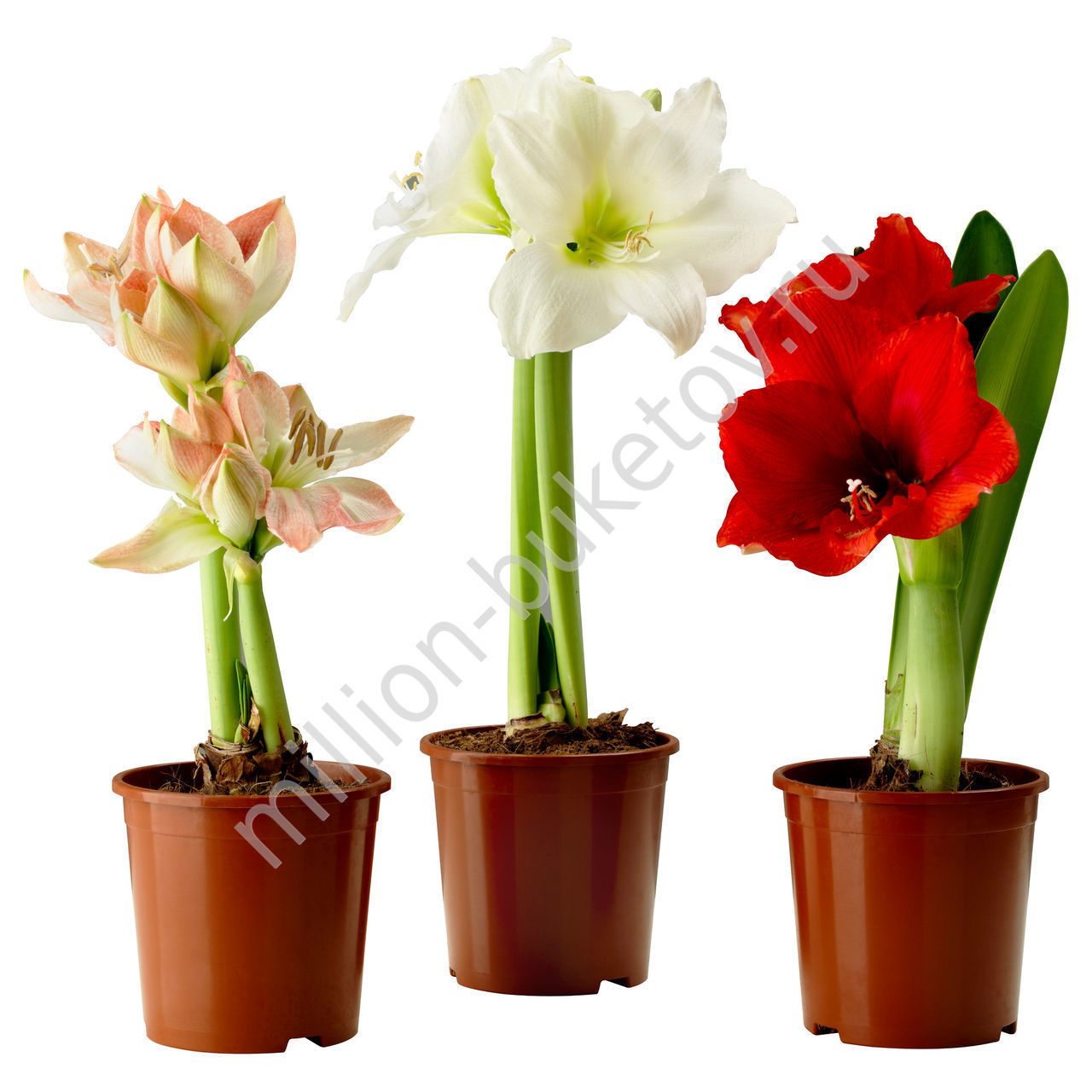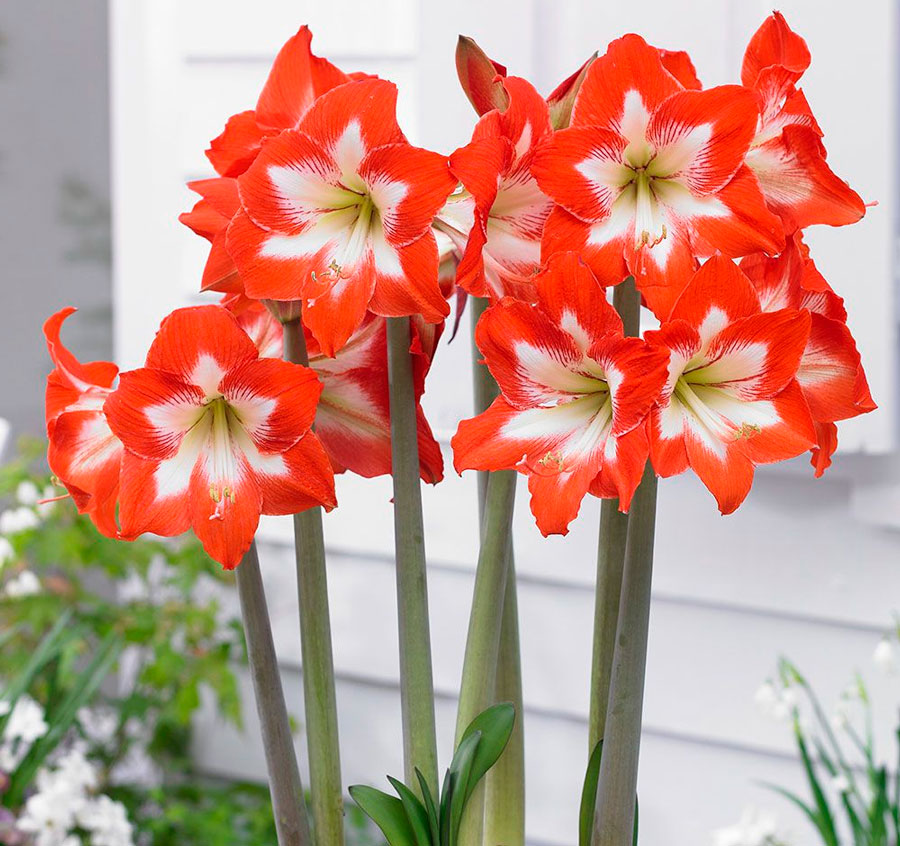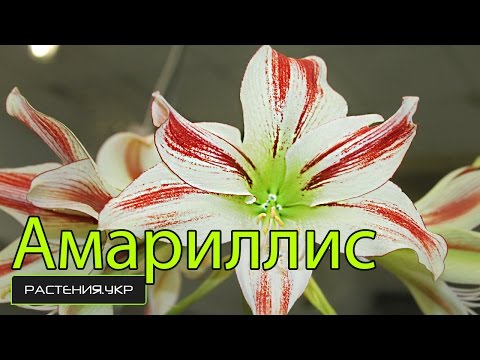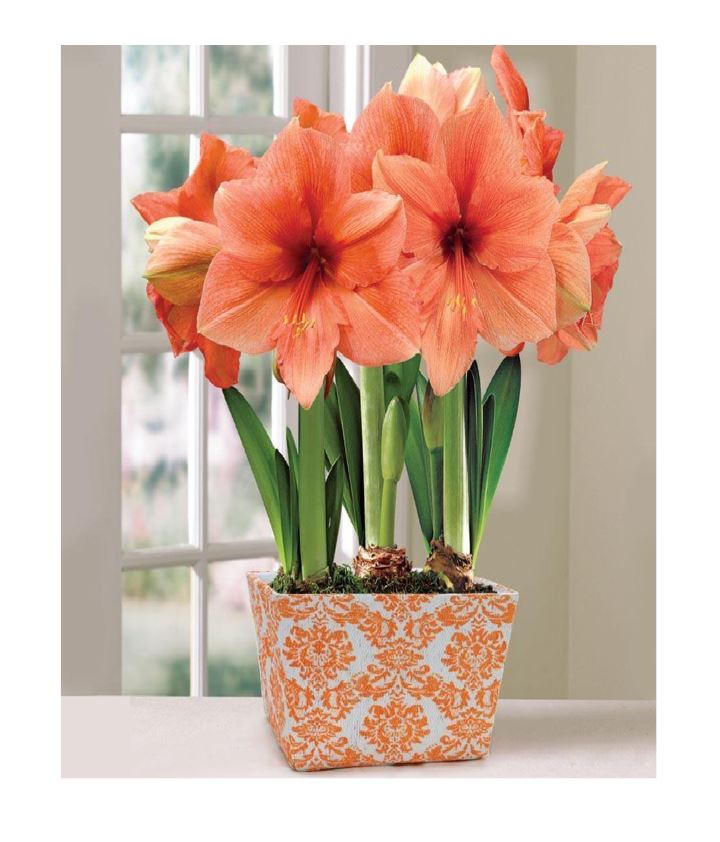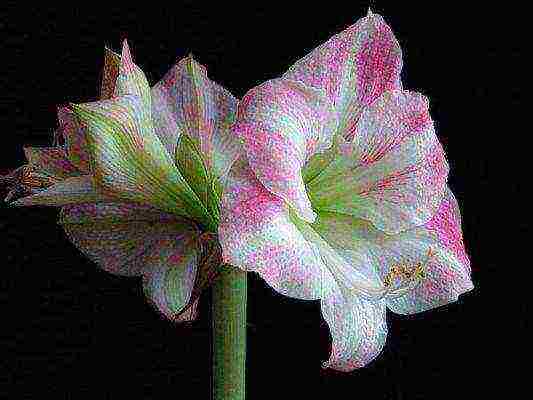Description of amaryllis

Planting and flowering amaryllis Amaryllis reproduction and care at home
Amaryllis (Latin Amaryllis) is the most common genus of the Amaryllis family (Latin Amaryllidaceae). Initially, botanists attributed one type of plant to it - Amaryllis belladonna (or Amaryllis belladonna). Over time, approaches to taxonomy changed, and two more species of amaryllis were included here - Amaryllis sarniensis and Amaryllis paradisicola.
Amaryllis belladonna comes from southern Africa. Researchers say the plant spread from the Oliphants River Valley in the Cape Province of South Africa. As for other species, here the geography is wider - South Africa, Japan, Australia, some islands of the English Channel - they can be considered the birthplace of plants.
The genus amaryllis was first described by the famous Swedish scientist Karl Linnaeus in 1753, who was engaged in taxonomy. The merit of the name of this flower belongs to him. Before his work, it was believed that amaryllis is only one of the subspecies of lilies. He was called lilionarcissus. Linnaeus realized that this is a separate plant, but introduced a significant error in taxonomy, including a number of hippeastrum varieties in the amaryllis genus. And to this day, many confuse these plants.
The name of the plant is first encountered in the work of Virgil. In his poems, you can find the heroine - the shepherdess Amaryllis or Amaryllis. This name in Greek means "sparkling".
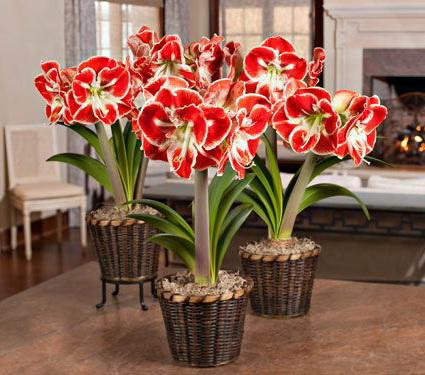
Amaryllis flowers care Amaryllis flower photo
Amaryllis is a bulbous perennial flower with dark green smooth leaves. The greenery of the plant is so narrow and long that it looks like a belt. The leaves are arranged in two rows.
The commemoration of the beginning of flowering of amaryllis is the growth of a long hollow tube of 40-60 cm - this is a peduncle. The plant produces up to three peduncles. Leaves grow next. In the wild, this occurs in late summer - early autumn. Each peduncle bears 2-12 flowers, depending on the variety. By the type of inflorescence - an umbrella.
Wild amaryllis can have flowers with white, pink and red petals in various shades. Breeders have artificially bred many hybrid varieties of yellow, purple, orange, green. A single amaryllis flower looks like a lily and is a gramophone, measuring 10-12 centimeters in diameter.

Amaryllis belladonna Amaryllis Belladonna planting and care at home photo
Despite the seeming beauty of the plant, amaryllis has poisonous parts. The alkaloid lycorin was found in the bulb. If it gets on your skin, it will irritate. All planting operations with the plant must be carried out exclusively with rubber gloves, and then wash your hands with soap and water. Keep the flower away from pets and children.
What is the difference between petals and inflorescences
Amaryllis
- Bulbous plant, average stem height about 60 cm.
- It blooms twice a year when planted outdoors and once a year indoors. The reason for this flowering time is the South African origin of the amaryllis, since in the homeland of the amaryllis located in the southern hemisphere, spring occurs in September-November.
- The leaves formed in late autumn or spring die off in warm weather, so the amaryllis flower has a stem and inflorescences, but does not have leaves during flowering. And this is its special peculiar charm!
- Now about the inflorescences. There are from 2 to 12 flowers on the stem, each of which is formed into a funnel-shaped cup of six identical petals. One gets the impression that a skilled craftsman cast the petals in one shape.
- Shades of color of petals - from pale pink to deep saturated purple.
Hippeastrum
- Hippeastrum is also a bulbous plant up to 80 cm high. There are specimens up to 1 m long.
- It blooms up to four times a year (at least 2 times a year), the number of blooms can be regulated by soil selection and appropriate care. The flowering period is in winter and the first half of spring.
- The leaves are arranged as follows: three leaves are located at the base, the fourth serves as a substrate for the inflorescence.
- There are from 2 to 6 inflorescences on the stem. The flowers are formed into a funnel-shaped cup of 6 petals. Depending on the variety, the petals can be narrow or not very, short or long.
- The number of tones and shades of the color range reaches 2000.
When considering the colors, you can find some differences that are characteristic of this particular species.
This species grows from a bulb and reaches a stem length of up to 0.6 m. The plant can bloom up to 2 times a year if planted outdoors.
When planted at home, the flower blooms once a year. This phenomenon occurs due to the territorial origin of the species. In Africa, spring begins in September.
On average, up to 12 inflorescences appear, which look like a bowl-shaped funnel consisting of 6 petals of the same shape. The plant has a wide range of colors from pink to purple.
The stems of this flower grow from a bulb and reach sizes up to 0.8 m, and sometimes up to 1 m.Hippeastrum can bloom up to 4 times a year, this phenomenon is regulated by the correct approach of soil and watering.
Blooming of buds occurs in winter and spring. The stem has 2 leaves at the base, as well as an additional one to support the inflorescence.
Amaryllis, when blooming, produces 6 identical petals that twist into a spiral. At the same time, the color scale is not rich in shades from soft pink tones to bright purple.
Gardeners can observe the opponent's petals of different shapes, which depend on the type of plant. Flowering is accompanied by a variety of colors.
In the process of blooming flowers, they may differ for the following factors:
- amaryllis seeds germinate in 8 weeks, while the opponent's in 2;
- during the flowering period, the hippeastrum is surrounded by foliage, unlike its analog;
- plants differ in the number of flowering, as well as in the season of blooming of inflorescences;
- amaryllis does not tolerate being used to create bouquets, it quickly fades.
Blooming amaryllis at home
Wild amaryllis enters the flowering phase in early autumn. In indoor floriculture, there are tricks on how to change this term. The easiest one is to plant the bulbs at a different time. So, when choosing healthy specimens, they begin to grow immediately after planting, giving mature flower stalks as early as 7-8 weeks. Here you need to observe - if there are more than two peduncles, they are removed so as not to abundantly load the bulb with flowering.
When the first flower appeared and blossomed, some cut the peduncle and put it in a vase. Provided that the water is renewed every day, it can stay there for up to three weeks. You can not cut the peduncle, but it will stand the same, and will drain the bulb much more. To maximize flowering time, place the vase or flowerpot in a colder, darker place.
Description of hippeastrum
Hippeastrum is odorless when amaryllis has a pleasant aroma during flowering.
These plants have a rest period at the end of autumn and the beginning of winter. Moreover, rest in hippeastrum occurs when flowers fall, a certain season does not affect this process.
The root system of amaryllis should be removed after the foliage is completely dry, while it accumulates nutrients for the storage period before planting.
The temperature in the room where the bulbs will be kept at 15 ° C.If the soil temperature drops to negative values, it is forbidden to leave the root system in it.
Positive readings lead to premature stem germination. In this case, the normal rest of the plant will not occur; after planting in the ground, it may die from the fact that the nutrients were consumed in advance.
From the center of the scaly bulb of the hippeastrum, a flowering arrow grows first, in large bulbs, 7-10 cm in diameter, there may be several such arrows. Simultaneously with the arrow or after it, long arrow-shaped leaves of a dark green color appear from the bulbous scales of the plant, dense and smooth to the touch.
The flower stalk holds up to six buds, of which large funnel-shaped flowers bloom from 12-14 cm in diameter, and the diameter of some varieties can reach 25 cm.The petals of the hippeastrum flower are also six in number, the shape can be different - rounded, pointed, oval ... The colors, shades and shapes of petals and leaves are varied and depend on the plant variety.
When the seeds ripen, the tricuspid box-fruit of the hippeastrum may burst. Fresh seeds of the plant give better germination than seeds that have lain down.
Important!
Sometimes an artificial rest period of up to 3 months is created for the hippeastrum in order to provoke budding.
Care after flowering consists in the timely cutting of the peduncles.
It is important to provide the plant at this time with adequate nutrition, watering
Description of plants and differences
Amaryllis and hippeastrum are relatives belonging to the same botanical family, but representing different genera.
Amaryllis (lat.Amaryllis)
The plant is South African, a native of the Cape Province of the Republic of South Africa, which is known for supplying the world with quite a lot of flowering endemics (plants that are not found in nature anywhere except in a certain place).
Until 1998, the genus Amaryllis consisted of a single species - Amaryllis belladonna (Latin Amaryllis belladonna), and later several more varieties appeared: Amaryllis bagnoldii, Amaryllis condemaita, Amaryllis paradisicola.
Amaryllis bulb is huge - with a diameter of 5-10 centimeters. Amaryllis peduncle is leafless, leaves are green, 30-50 centimeters long and 2-3 centimeters wide, arranged in 2 rows. Leaves are formed in autumn or early spring in cool climates and die off by the end of spring.
The bulb produces one or two bare peduncles at the end of summer. The height of the peduncles reaches 60 centimeters. Each peduncle bears an inflorescence, which consists of 2-12 funnel-shaped flowers. Amaryllis flowers from snow-white to pink shades, are found in purple and red. The size of the flowers is 6-10 centimeters in diameter, they consist of 6 petals.
Hippeastrum (lat.Hippeastrum)
Belongs to the Amaryllis family. There are about 90 types of hippeastrum. The name of the flower consists of 2 roots of the ancient Greek language, which means “rider” and “star” in translation.
Often, hippeastrum is confused with amaryllis, but you should know that beautiful amaryllis (a unique representative of the genus) grows naturally in southern Africa, and hippeastrum - in the subtropics and tropics of America, in particular, in the Amazon basin.
Hippeastrum was introduced to Europe in the 16th century, and in 1799 the first hybrid of the plant, Johnson's hippeastrum, appeared.
Plant differences
Amaryllis and hippeastrum - these two plants are often confused because they are very similar to each other in appearance. Their flowering stage is different, which is what distinguishes them. Amaryllis blooms in autumn - the flowers are fragrant, and hippeastrum blooms in winter or spring - flowers are odorless.
Another indicator that distinguishes these 2 plants is the number of flowers per peduncle: in hippeastrum - up to six flowers, and in amaryllis - from six to twelve flowers per peduncle.
Also, these two beautiful flowers can be distinguished by the shape of the bulb. Amaryllis bulbs are pear-shaped, rather large. The bulbs of the hippeastrum are more convex and slightly flattened, but it is difficult to distinguish some bulbs from others. In order not to be mistaken in the selection of bulbs, it is better to buy them in designated stores in the manufacturer's original packaging. The bulbs of these plants can stay dry for quite a long time.
Amaryllis is represented by the only variant of Amaryllis belladonna, it is extremely rare, those plants that are sold under the name "amaryllis" are essentially hippeastrum.
Hyppeastrum hybrids are exceptionally beautiful, their flowers come in a variety of colors: orange, snow-white, pink, red, they are also found with stripes of a different color along the edges or along the petals.
The difference in the species diversity of colors
Although the plants are classified in the same family, called Amaryllidaceae, they are subdivided into different genera. Amaryllis has one species of the same name, while there are almost 100 varieties in the genus hippeastrum. Moreover, there are many hybrid varieties of hippeastrum that have been bred by breeders.
The origin of plants
The spread of amaryllis around the world began in South Africa. Hippeastrum used to grow only in the Amazonian humid forests on the American continent. Both plants were exported to Europe, where they began to be cultivated at home.

Hippeastrum is difficult to cross
Both flowers appeared on the European continent almost simultaneously, so they were classified as one species and called lilies. At first, no one guessed that these were two flowers completely different in botanical origin.
For your information! The first such an assumption was put forward by the scientist botanist W. Herbert, this happened in the 19th century. However, officially, the distinction and assignment to different subspecies were approved only in 1954 at a major botanical international event.
Crossbreeding ability
Hippeastrum is generally difficult to give in to this procedure; in almost 90% of cases, the flower does not have the ability to interbreed with other varieties and species of its group. But belladonna calmly tolerates this process, it lends itself especially well to crossing with nerina or brunswigia.
Note! It is impossible to cross plants with each other, which was once the first sign that they are different from each other and do not belong to the same species
Flowering periods
Hippeastrum from amaryllis is distinguished by the period and duration of flowering. This distinction is, of course, not a visual distinction and will not help when purchasing a plant. However, if friends have such a plant and the exact name is not known, you can simply follow the time at which the flower begins to form buds.
Hippeastrum blooms early, already in the second half of winter, the indoor flower opens its buds. This process usually takes place from February to May. Until the end of the season, flowering can occur 2-3 more times with short interruptions. But during wintering, from November to February, the bush rests and does not release buds.
Home interior flower amaryllis blooms for the first time in a season only with the approach of autumn. This process continues until the plant leaves the dormant stage. But the flowering at the bush is much more abundant, in one process up to 12-13 inflorescences can bloom.
Appearance, color and shape of flowers, leaves
It is possible to distinguish belladonna - a flower similar to hippeastrum, visually, that is, by comparing the external characteristics. Amaryllis grows to about 50-60 cm in height, and in the hippeastrum the average length is much longer, it ranges from 80 cm to 1 m.
Each stem of the hippeastrum has two leaves at the very base, another additional one grows specially to hold large inflorescences.Belladonna stems are single, on the top of which are inflorescences.
Note! At home, hippeastrum tends to bloom in several approaches. Amaryllis can also give buds again, but only with proper and constant care, as well as if it grows in open ground and with enough natural light
Amaryllis, after flowering, often begins to lose its foliage. There is nothing to worry about, since this behavior is quite typical for a flower. The flowers are in the shape of a funnel-shaped bowl and include 6 petals of the same size. Their colors come in various shades: pink, lilac, lilac, purple.
In the hippeastrum, only 3 to 6 inflorescences appear. The shape, size and color of the buds completely depend on the type and variety of the plant. Like belladonna, a common and common shape is a funnel-shaped bowl. But the colors of the inflorescences are much more diverse than that of belladonna, there are about 2000 different colors.
The leaf plates are also slightly different. In hippeastrum, they are belt-shaped and wide, and in amaryllis, the xiphoid leaves are much thinner.
Reproduction of amaryllis
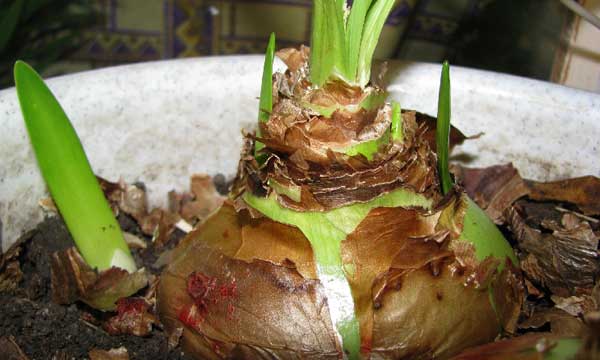
This flower can be propagated in two ways - by seeds and daughter bulbs.
Reproduction of amaryllis by seeds
This method is not particularly popular due to its unreliability and laboriousness. If you want to try this method, then preference should be given to seeds from your plant, and not purchased ones. Of course, if you have your own amaryllis. To obtain seeds, the flowers must be manually pollinated. This can be done with a soft brush, transferring pollen from flower to flower. After flowering, a seed box should form. When it is dry and cracked, you can harvest the seeds. They are planted in light nutritious soil, and grown like a normal seedling. The flowering of amaryllis grown from seeds can be expected in 5 years.
Reproduction of amaryllis by daughter bulbs
With normal content on the amaryllis bulb, small onion-daughters are formed in peculiar pockets. They are carefully separated and planted in a temporary mixture of sand and peat or sand and perlite. When the amaryllis bulbs grow a little and get stronger, they can be transplanted into a permanent earthen mixture. Within a year after planting, the young bulb should be half the size of the mother bulb. Flowering of amaryllis grown from daughter bulbs can be expected in 3-4 years.
Amaryllis does not bloom
There may be several reasons for this unpleasant phenomenon. But they are all the result of improper care and maintenance. The main ones are:
- Lack of a dormant period;
- The potted soil is too dense. Due to this, the roots of amaryllis develop poorly;
- The bulb is too buried in the ground;
- Improper watering. The soil in the pot is too wet or too dry.
If your amaryllis does not bloom, then consider caring for it. And if you identify any of these causes, eliminate it.
7 differences between amaryllis and hippeastrum
hippeastrum and amaryllis
If you put amaryllis and hippeastrum next to each other, then the difference between the plants is immediately visible. But individually they are very often confused, although both flowers have many differences. Let's talk about the main ones.
1. Difference in origin
Although both plants belong to the Amaryllidaceae family, they come from different continents and belong to different genera. Amaryllis is a native of South Africa, belonging to the genus of the same name, in which he is practically the only representative.
Hippeastrum belongs to the genus Hippeastrum, which has more than 90 plant species. Most of these flowers were found in the Amazon Basin in South America.
2. Difference in flowering time
The origin of hippeastrum and amaryllis influenced the timing of flowering. If one of these bulbous plants has blossomed on your windowsill in the fall, rest assured that it is an amaryllis. In winter, hippeastrum blooms.
Of course, if you buy a plant at a flower shop, then you can be wrong here, because manufacturers are engaged in forcing hippeastrum all year round.
3. Difference by bulb
Amaryllis and hippeastrum have different bulbs in appearance and shape. In the South African "beauty" they are smooth and pear-shaped, grayish in color, covered with a kind of cobweb inside, often form daughter bulbs.
Hippeastrum bulbs are usually rounded or slightly elongated and white in color. "Children" around them are less common.
4. Difference in peduncle
Both plants differ significantly in their peduncles. In the hippeastrum, it is hollow inside and higher in height (it can reach 1 m). Amaryllis has a dense and strong peduncle. inside it has no cavity, everything is filled with tissue. The dimensions are more modest than that of the hippeastrum, with a maximum of 60 cm.
5. Difference in leaves
Amaryllis leaves die off by the time of flowering. They usually appear in late autumn or spring, and dry up with the onset of the summer heat.
Hippeastrum always has leaves during flowering. Three of them are located at the base, and the fourth supports the inflorescence. True, due to distillation, hippeastrum can bloom without leaves, and therefore confusion occurs.
6. Difference in flowers and their smell
The main differences between amaryllis and hippeastrum are, of course, in the shape, color and size of flowers. A guest from South Africa usually blooms more profusely: there can be up to 12 flowers on one peduncle. Hippeastrum cannot boast of this, tk. its hollow stem will not support this weight. It usually has 2-4 flowers.
What hippeastrum is superior to amaryllis is in the size of their flowers: they can reach 25 cm in diameter. The "beauty" has no more than 10 cm.
Due to the multitude of species and varietal diversity in hippeastrum and a much richer color range, there are two-color and even multi-color varieties. While amaryllis are only white, pink, red and purple.
There is also a difference in the smell of flowers. They do not smell in hippeastrum, but in amaryllis they exude a wonderful aroma. So when you feel it, you will know exactly what kind of plant you have in the pot.
7. Difference in seed germination
Like most plants, bulbs can also propagate by seeds. So, hippeastrum and amaryllis have different terms of their germination. For the seeds of the first, two weeks are enough to germinate, and for the seeds of the second, it will take at least 8 weeks.
Hippeastrum and amaryllis have other differences: in the color of the stem, the structure of the bulbs, the color of the scales, etc. But in order to distinguish these two plants, we hope that the above will be enough, especially since amaryllis in apartments are much less common than hippeastrum.

